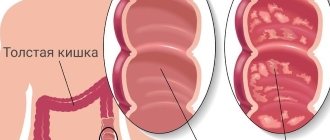Sore throat is one of the most common infectious diseases that affects our tonsils (tonsils). In the medical literature you can find another name for this diagnosis: acute tonsillitis. Purulent sore throat in an adult is an infectious disease that is provoked by pathogenic microorganisms, namely hemolytic streptococci of groups A and B, and less commonly staphylococci.
The disease is extremely contagious. The disease is transmitted not only by airborne droplets. You can become infected through contact when sharing the same dishes or towels with a sick person. Both children and adults are susceptible to the disease.
This disease has a clearly defined seasonality and most often appears in the autumn-spring period.
Despite the fact that many people treat the diagnosis of “acute tonsillitis” as something natural and commonplace, nevertheless, this disease is not as simple as it seems. If there is a careless attitude towards it, when proper treatment of purulent sore throat in adults is not carried out, severe complications can develop, involving associated organs (kidneys, joints and myocardium - heart muscle) in the chronic inflammatory process.
Why does infection occur?
In the vast majority of cases (60-80%), the causative agent of the disease is streptococcus bacteria. Less commonly - staphylococci and pneumococci. There are always microorganisms throughout the human body and in the palatine tonsils in particular. When a person’s health is normal and his immunity is not weakened, they do not manifest themselves in any way. But as soon as the body’s defenses fail in the presence of factors predisposing to the disease, pathogens become more active. If a person shows the first signs of a sore throat, it means that pathogenic microorganisms have penetrated deep into the tonsils and triggered the inflammation mechanism.
The reasons that provoke the inflammatory process include:
- prolonged exposure to the cold, cold drinks or food (sometimes it is enough to eat ice cream or fall asleep with the air conditioner on);
- tonsil injuries;
- reduced immunity;
- lack of full breathing through the nose due to the anatomical features of a person (adenoids, polyps, cysts in the nose and nasopharynx);
- inflammation present in the body;
- bad habits, especially smoking;
- unfavorable environmental conditions;
- unfavorable working conditions.
Gargling with soda and salt for sore throat - recipes
Soda is a universal remedy that acts on bacteria that cause disease and relieves inflammation and pain.
There are several ways to prepare the solution. The proportions depend on the type of lesion and the duration of the course.
Traditional recipe
- 1 tsp soda.
- 300 ml water.
Just stir the ingredient. One glass - one rinse. The frequency of the latter is at least 5 times a day.
With peroxide
Here you will need 2 glasses of water. Add a spoonful of soda to the first, a spoonful of peroxide to the second. Rinsing is carried out alternately. It needs to be done every 3 hours.
Based on iodine with sea salt
A very effective remedy. To the already prepared classic recipe, add 2 drops of iodine and a spoonful of sea salt.
With salt
No infection will survive this combination. Dissolve a spoonful of each ingredient. Add beaten egg white to the mixture. You'll probably ask why. The reason is the saturation of the solution. Protein will reduce it. Without it, even more inflammation and even burns may appear on the throat. The solution should be used 4 times a day. Salt disinfects affected tissues and kills bacteria living in the oral cavity.
Honey and milk
The recipe differs in that milk is used instead of water and you will have to drink the solution. You only need a pinch of soda and you need to add a spoonful of honey to the drink, you can supplement it with oil. After drinking the formula, you will feel how it coats your throat, reducing pain.
For treatment to be effective, refrain from eating for 60 minutes after treating your throat. Although, if a person is sick, he will not have time for food.
Types of purulent sore throat
In otorhinolaryngology, several forms of the disease are distinguished: catarrhal, follicular, lacunar, and phlegmous, ulcerative-necrotic, dental and latent (Simanovsky-Plaut-Vincent). Immediately after diagnosis, qualified treatment of the disease should be started on the same day in adults and children, regardless of the form of the disease. In this article we will describe the most basic forms of sore throat.
With follicular tonsillitis, the tonsils become greatly enlarged, and purulent spots appear on their surface. The disease begins rapidly with a sharp rise in temperature to 40°C. The lymph nodes become enlarged, and when pressed on them the patient experiences discomfort. The patient is overcome by headaches, “aches” throughout the body and general malaise.
With lacunar angina, purulent masses penetrate into the thickness of the entire tonsil, filling its lacunae. To the symptoms of follicular tonsillitis, a reaction from the gastrointestinal tract is added: vomiting, diarrhea, nausea. A characteristic yellowish coating is noticeable on the tonsils, upon removal of which the patient feels improvement and the body temperature drops.
Phlegmonous is the most severe form of the disease. It is characterized by the accumulation of purulent masses in the tonsil, the patient’s temperature reaches 40°C. In parallel, swelling of the neck and perimaxillary area occurs. Possible respiratory arrest. The patient experiences severe pain: it becomes impossible to speak or swallow. The patient must be immediately sent to hospital, since in the absence of prompt assistance there is a risk of death.
Such a division, of course, is quite arbitrary, since one type of disease can transform into another and cause serious health problems (provided that qualified treatment of the disease is not provided to adults).
Forms of sore throat and symptoms of the disease in adults
Each form of sore throat manifests itself differently. It is important to find out which pathogenic microorganism caused the disease. But it is impossible to determine this at home. Only a qualified doctor can accurately identify the nature of the pathogen and prescribe adequate treatment for sore throat, promoting a speedy and complete recovery.
Catarrhal sore throat
Acquired through contact with an infected person, it begins acutely, with a slight increase in body temperature and a feeling of weakness. The tonsils and submandibular lymph nodes are slightly enlarged. Dryness in the mouth and throat is accompanied by a sore sensation; swallowing is painful and difficult. If not stopped in time, the disease can develop into a severe form with subsequent complications.
Lacunar tonsillitis
The purulent form of tonsillitis is characterized by a very rapid onset of symptoms. The lymph nodes become enlarged and swollen, the tonsils are markedly swollen and covered with a white-yellow purulent coating. The throat with lacunar sore throat hurts especially badly.
An increase in temperature to 40 degrees is accompanied by headache, muscle and joint pain, sometimes radiating to the heart. Fever may cause seizures, vomiting, and confusion.
In the absence of proper treatment, lacunar tonsillitis can develop into fibrinous tonsillitis, when severe purulent intoxication of the body begins, in some cases causing brain damage.
Follicular tonsillitis
The purulent form has symptoms similar to lacunar angina. The tonsils are covered with many purulent follicles. Sometimes the patient complains of pain in the lower back, joints ache, like with the flu. Unbearable pain in the throat radiates to the ear.
This form of purulent tonsillitis is dangerous due to a wide range of complications, as well as rupture of the follicles inward, followed by a purulent abscess.
Herpangina
A dangerous viral form acquired by using a shared toilet, shaking hands and any type of tactile contact with a carrier of the disease - a person or animal. Small serous blisters appear on the tonsils, throat and palate. The throat hurts unbearably, the cervical lymph nodes are swollen and painful to the touch.
At the same time, all the symptoms characteristic of influenza appear: fever, chills, headache, nausea, diarrhea.
Confirming the diagnosis of “herpetic sore throat” is only possible by consulting a doctor. A qualified specialist will first of all direct the patient to undergo tests for serological testing and virology, after which he will prescribe a course of necessary antibiotics.
Otherwise, improper treatment can have serious consequences: encephalitis, meningitis, and myocarditis.
Phlegmonous sore throat in adults
This is a purulent form of the disease, typical for the age group of 20-40 years. The causative agent is streptococci, and the cause is not long-standing catarrhal or follicular tonsillitis. With this form of sore throat, redness is observed not only of the palate and tonsils, but also of the peri-almond space.
The throat hurts on one side, the focus of suppuration does not have clear boundaries and requires surgical intervention.
The patient has chills and fever, the voice is hoarse or disappears completely. As a result of purulent melting of the tonsil, a characteristic, unpleasant odor comes from the mouth.
Treatment of phlegmonous sore throat cannot be delayed. In the absence of timely assistance from specialists, in most cases, cervical or brain abscesses, purulent meningitis, and general blood poisoning occur.
Treatment of angina should occur under the strict supervision of a doctor, who will be able to notice in time and prevent the development of complications that are of the most unexpected nature.
Symptoms
The first signs of the disease appear almost immediately (from ten hours to a day from the moment of infection!). Symptoms of purulent tonsillitis first appear similar to the symptoms of ordinary tonsillitis. The patient tries to cure a sore throat by gargling, but such measures have no effect. Then the following symptoms appear:
- high body temperature (up to 40°C);
- “lump” in the throat, increasing pain in the throat: ranging from a slight soreness to a “pain” when swallowing;
- nausea, vomiting, diarrhea;
- enlarged lymph nodes, pain when pressing on them;
- tonsil hypertrophy;
- the appearance of purulent plaque or pustules on the surface of the tonsils;
- pronounced intoxication of the body - the patient loses appetite, feels weak and lethargic.
Patients need to remember the first and main rule: it is necessary to treat purulent sore throat immediately: the sooner you start treating the disease, the faster the recovery will come, and the risk of developing pathologies will be minimized.
Treatment of tonsillitis
The child should be provided with:
- peace and the opportunity to sleep as much as he wants;
- Drink plenty of fluids to relieve sore throats and prevent dehydration;
- air humidification;
- a sore throat can be relieved by both warm drinks and cold ice cream, especially popsicles;
- for a sore throat, it helps to gargle with a solution of table salt and soda - a teaspoon of salt and a small pinch of soda per 250 ml of warm water;
- Children over 4 years old can be offered lozenges for sore throats. Do not give candy to small children - they may choke;
- do not smoke when your child is sick, avoid strong odors that irritate the throat;
- A sore throat and fever can be relieved by medications containing paracetamol and ibuprofen. Don't give children aspirin; in rare cases, it can cause deadly Reye's syndrome.
Confirmed bacterial tonsillitis (usually streptococcal tonsillitis) is treated with antibiotics. It is dangerous to interrupt or stop the course because it increases the likelihood of infection spreading to the joints, heart, kidneys and other organs. Continue taking antibiotics even if your symptoms are completely gone.
Complications with purulent sore throat
The disease is dangerous due to its complications, which can affect not only the respiratory system, but also spread to other human organs.
One of the common pathologies is the transition from an acute form of the disease to a chronic form (chronic tonsillitis). In chronic tonsillitis, inflammation is constantly present in the tonsils, and exacerbations occur 2-3 times a year, and in severe cases, more often.
Delayed treatment of the disease can lead to inflammation of the heart muscle (myocarditis), joint diseases (rheumatoid arthritis) and kidneys (glomerulonephritis and pyelonephritis). It is possible that a sore throat may develop into an abscess. This happens when the infectious pathogen has little space in the thickness of the palatine tonsil, and streptococcus begins to look for new sites for itself. Thus, inflammation can move to the paratonsillar and parapharyngeal tissue and provoke a paratonsillar or parapharyngeal abscess.
The pathologies listed above are powerful arguments for promptly starting treatment for purulent tonsillitis.
Gargling with soda and salt for sore throat - proportions
Sore throat is a serious disease and must be treated seriously. Pills are not always the best solution. They weaken an already exhausted body. Painkillers only treat the symptoms, not the cause. It is necessary to fight the microbes that have entered the tonsils.
It is best to fight sore throat with soda, in combination with salt. They are able to defeat the infection in a couple of days.
There are many recipes for the proportions of this combination, but the most correct is considered to be a mixture with the same amount of ingredients. If their action is uniform, the symptoms will also disappear at the same speed. Remember that you can add iodine to enhance the effect. The event should be carried out every 2 hours, then you will be able to overcome even a purulent sore throat.
Soda for gargling
Clinical picture
Once a pathogen enters the body, two hours are enough for it to spread. Streptococci settle on the tonsils, weakening local immunity. The incubation period varies from several hours to 5 days.
The main differences between purulent tonsillitis are symptoms:
- A sharp pain in the throat occurs, which causes discomfort even at rest. The next day she becomes unbearable when talking or eating.
- Within a few hours, the body temperature rises to 39-40°C. Against the background of high temperature, it throws you either hot or cold, sweating increases and chills are present.
- Swallowing saliva causes severe, sharp pain.
- There is not enough air when breathing due to swelling of the tonsils.
- When examined with the naked eye, swollen tonsils and severe hyperemia of the back wall of the throat are visible. The next day the tongue and palate swell.
- There is a sensation of a foreign body in the nasopharynx, which intensifies when saliva is swabbed.
- Due to the fact that the tonsils are well supplied with blood, a yellowish-white dot appears on them, the boundaries of which quickly expand. The next day, the throat may become covered with many white purulent dots, which gradually merge into large ulcers.
Purulent tonsillitis in children occurs in a more severe form. Due to the excessive pressure of the swollen lymphoid tissue of the adenoids on the Eustachian tubes, the ears become blocked and there is tinnitus. If treatment is not attempted, the infection can spread to the ears, complicated by otitis media.
Usually the acute period lasts no more than one week if treatment is prescribed on time.
Important to know and remember! Purulent tonsillitis is a dangerous infectious disease, so the patient should be immediately isolated from household members.








